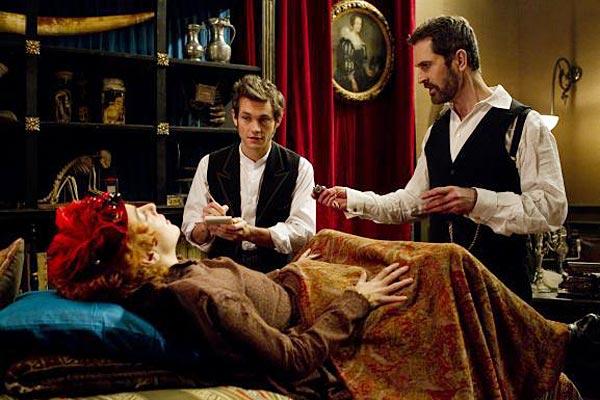Last Saturday night, I decided to close a remarkable TIFF season with a showing of Hysteria. I grabbed my girlfriends and we waited in the rush line in hopes of catching the flick about the invention of the vibrator. With its smart comedy, charming characters, and social history, the film is definitely starting a buzz.
The film is set in London in the 1880s, when women were as uptight as the corsets around their waists. There is a wave of a catch-all diagnosis for upper-class women who are depressed, lonely or frantically nervous called hysteria. We know today that hysteria is not a real condition but merely an allegory for being horny, but in that time, they treated hysteric women by manually stimulating a lady’s better parts. Mortimer Granville (Hugh Dancy) is an honourable young doctor who believes in science and germ theory, and struggles to keep a job when the old-fashioned hospitals are adjacent to the morgue. He stumbles upon an opening with Dr. Robert Dalrymple (Jonathan Pryce) who specializes in treating hysteric women. Mortimer takes the job, unknowing that he would soon become very popular amongst his female clientele. He becomes so popular, that his right hand begins to cramp and twitch and he is unable to carry out normal business. While lounging with a buddy with an affinity for electricity, he discovers that an electric duster powered by a motor can vibrate and soothe muscles and tissue under the skin. After a few adjustments, the vibrator is born.
The film follows the true story of the liberating invention, while carrying out a love triangle between Mortimer and Dr. Dalrymple’s two daughters. Mortimer is supposed to marry Emily (Felicity Jones), a proper and educated woman, but he can’t help notice her sister Charlotte (Maggie Gyllenhaal), the outspoken social activist who, like Mortimer, wants to help those in need. As the story unfolds, a social rift between the homeless and the hysteric clients divides the family– and Mortimer as well.
The script is witty and hilarious, though I wish the romance between Charlotte and Mortimer was further developped. The audience, which surprisingly included many men, were laughing and cheering through many of the film’s witty, albeit dirty jokes. Director Tanya Wexler returns from a ten year hiatus with this romantic comedy with a lavish period set and costumes. The story sends a pulsing message and sheds a light on the sexual repression of Victorian women. The film illustrates how a little invention sparked the women’s movement towards sexual (and civil) freedom.


